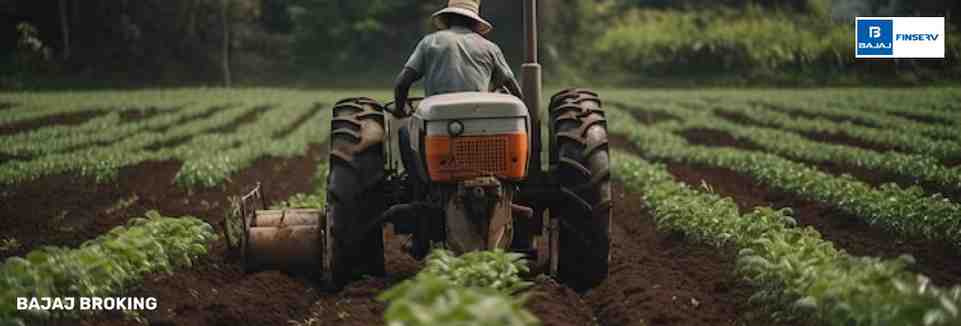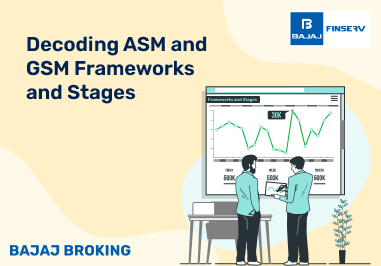The Indian economy has long been an agrarian one, and to promote developmental projects, the government has introduced several schemes. One such scheme is the Kisan Vikas Patra, which encourages investments to build a valuable corpus in the long run. Although the name suggests its close ties with farmers, Kisan Vikas Patra is a post-office savings scheme where any person meeting the eligibility criteria can invest.
Let’s learn more about the Kisan Vikas Patra and how it has become a widely popular saving scheme over the years.
What is Kisan Vikas Patra?
The Kisan Vikas Patra was introduced in 1988 by the government as a small saving certificate scheme that encourages long-term financial saving amongst different classes of society. At the time of its launch, the scheme was focused on promoting savings amongst farmers but over the years it has become a popular saving scheme across different investor classes.
There are many aspects of Kisan Vikas Patra that you must understand before deciding to invest in it, one aspect you must know is that the Kisan Vikas Patra comes with a fixed 113-month tenure. This tenure was introduced to ensure long-term investments. One of the biggest reasons for the scheme to gain popularity is a steady return with minimal or no risk involved.
Availing benefits under the Kisan Vikas Patra is simple: any person meeting the eligibility criteria can visit the nearest post office or authorised the bank to avail the scheme in the form of a certification.
Types of Kisan Vikas Patra Scheme Accounts
Now that you have a fundamental understanding of the Kisan Vikas Patra let’s get into details of the different types of Kisan Vikas Patra scheme accounts:
As the name suggests this type of account under the Kisan Vikas Patra scheme is held by an individual who is an adult. Remember that an adult can open and hold this type of account on behalf of a minor as well.
Under this type of account, there are two joint holders of the same account and both are adults. On the date of maturity, both the holders get equal shares. However, remember that in case one of the joint holders dies before the maturity period only the living holder is entitled to the benefits of the account.
The Joint B Type Kisan Vikas Patra scheme account is very similar to the Joint A Type with the only difference being that on maturity or on the death of one of the holders, only one of the joint holders is entitled to the benefits under the account.
Eligibility Criteria for the Kisan Vikas Patra Scheme
Initially, when the scheme was introduced it was limited only to farmers but provided a wide range of benefits, investors from across the board started putting their money in. At present any person who is meeting the eligibility criteria can invest in the Kisan Vikas Patra scheme.
Here are the eligibility criteria:
Applicants must be residents of India.
Adults can apply on behalf of a minor.
Applicants must be over the age of 18 years.
How to Get a Kisan Vikas Patra Certificate
To invest in the Kisan Vikas Patra saving scheme, you can either follow an online or offline process. Here’s a detailed step-by-step guide to help you:
Steps to get Kisan Vikas Patra offline
Step 1: Visit the nearest post office or authorised bank to get the Kisan Vikas Patra or KVP certificate application form. Remember that the form has to be in Form- A1 type.
Step 2: Fill in the application form with all relevant details and documents.
Step 3: You have to provide any document showing that you have completed your KYC or know your customer verification.
Step 4: Submit the form and you will be provided with a receipt
Step 5: Once your documents are verified and approved you will be issued a Kisan Vikas Patra certificate either from the post office or the bank itself or you can also get it online or via email.
Steps to get Kisan Vikas Patra online
Step 1: Visit the official website of the Indian Post and find the Kisan Vikas Patra portal.
Step 2: Open the Kisan Vikas Patra portal and download the form-1 application.
Step 3: Fill in the application form with all the relevant details including investment type, investment amount, type of account and also the nominee.
Step 4: Get a printout of the application form and submit it to the nearest post office or authorised bank.
Step 5: While submitting the application form you have to make the payment either via cash, cheque, demand draft or any other mode as may be accepted.
Step 6: You will be issued the Kisan Vikas Patra Certificate immediately unless your payment mode is cheque, demand draft or pay order.
Benefits of the KVP Scheme
Let’s take a look at the benefits you can enjoy after investing in the KVP scheme:
One of the biggest advantages of investing in the KVP scheme is that investors are promised steady and stable returns irrespective of the market fluctuations. Introducing the feature of promised returns was done to promote participation from investors.
As discussed above the KVP scheme has a lock-in period of 30 months which is also its maturity period. This ensures that the investors cannot withdraw money before the passing of 30 months thus promoting long-term investments. Additionally, if the investor wants to continue beyond 113 months the amount in their account keeps generating interest.
Although investments made under the KVP scheme do not promise any tax exemptions under the Income Tax Act however the amount withdrawn at a time of maturity from the KVP account is exempted from TDS and TCS.
Once you have invested in the KVP scheme you are issued a certificate. The certificate can be used as collateral while applying for different types of loans.
Any Kisan Vikas Patra account holder can appoint a nominee who will be eligible to avail all the benefits on maturity of the savings, in case the account holder dies. This ensures that the account holder’s loved ones have a safety net in the account holder’s absence.
By now you must have understood that investing in KVP comes with additional benefits from the interest rates. Now, know that the interest accrued on the amount you have invested in is compounded yearly to ensure promising returns. The interest rates keep changing and as of February 2024, the interest rate is 7.5% per annum.
Key Differences Between Kisan Vikas Patra (KVP)
Interest Rate
| As of 5th February 2024: 7.5%
| Up To 8.8% per annum
|
Tenure
| 115 months
| 12 months to 60 months
|
Maximum Investment
| No limit
| ₹3 crore
|
Minimum Investment
| ₹1,000
| ₹15,000
|
Security
| Safe due to government support
| Rated AAA by financial agencies like ICRA
|
Documents Required to Get Kisan Vikas Patra Certificate
If you are applying for a Kisan Patra Certificate, here’s a list of documents that you must keep handy:
Identity Proof: It can be any identity proof issued by the government of India like an Aadhaar card, PAN card, driving license, passport etc.
Nomination
The Kisan Vikas Patra scheme provides the account holder with an option to provide a nominee who will be eligible to avail of all the benefits in case the account holder dies. The nomination is to be done by filling out the form C type at the time of opening the KVP account. However, in case the nomination is not done at the time of opening the account it can be done any time before the maturity period by filling out the same form: Form C.
How to Transfer Kisan Vikas Patra's Account?
Kisan Vikas Patra's account can be transferred in two situations: From one person to another or from one post office to another.
If you have to transfer the Kisan Vikas Patra account from one account holder to another then You can simply write a letter of authorisation with details of the person you want the account to be transferred in the name of and submit it to the post office.
To transfer the Kisan Vikas Patra account from one post office to another you have to follow the same process: Submit a handwritten authorisation letter to the concerned officer at the post office.
Kisan Vikas Patra (KVP) Helpline
Hopefully, we have solved all the queries you have regarding the Kisan Vikas Patra saving schemes how are in case you have any further queries you can get in contact with the Kisan Vikas Patra helpline at: 1800-180-1551.
Conclusion
The Kisan Vikas Patra scheme has provided an appealing opportunity for investors of different class groups to put their money in and generate long-term steady and stable returns. Since the scheme provides promised returns it is a great opportunity if you are a beginner who does not want to gauge market fluctuation to change their investments constantly.















